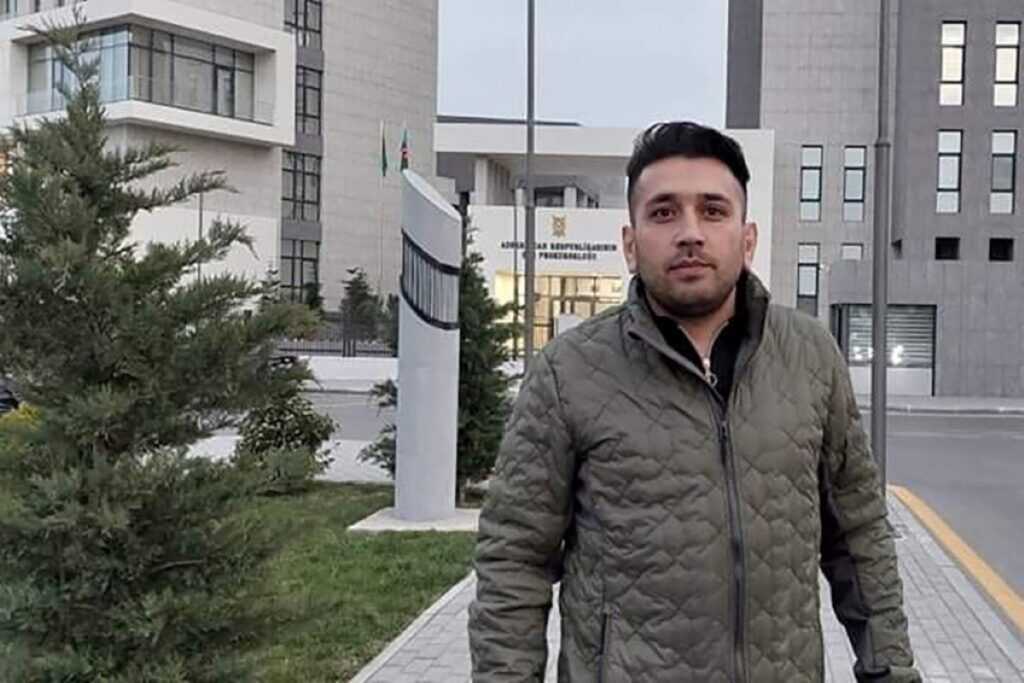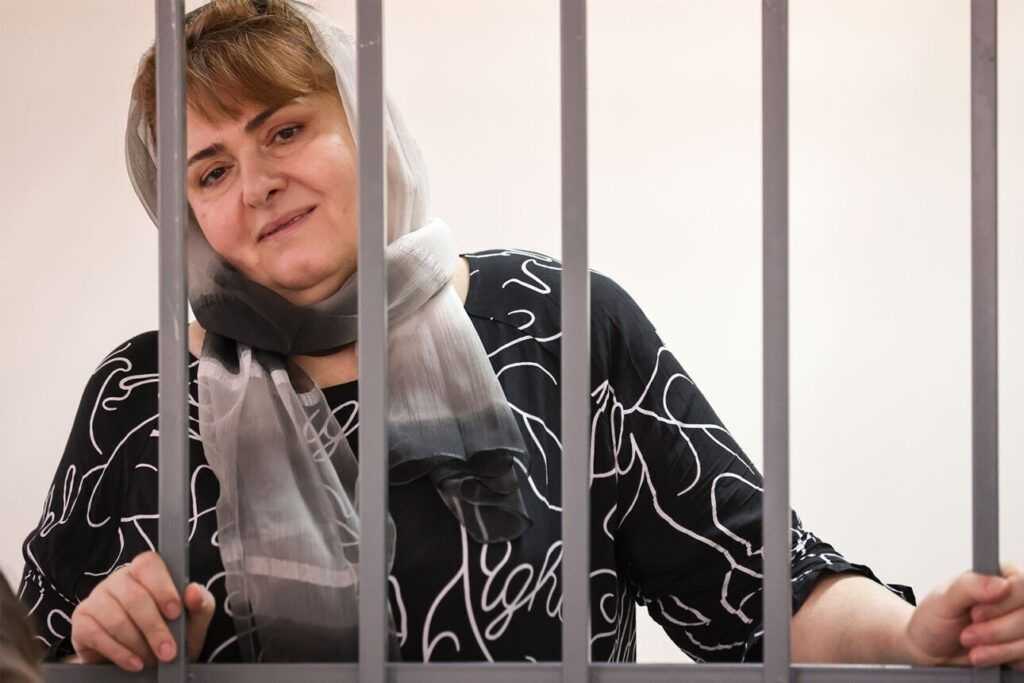
Armenian Prime Minister Nikol Pashinyan, Azerbaijani President Ilham Aliyev, and US President Donald Trump have agreed on a route from Azerbaijan through Armenia to the Azerbaijani exclave of Nakhchivan in a historic meeting at the White House.
In a press conference following their meeting on Friday, the three leaders sat together and answered questions, along with a three-way handshake that Trump said would cement the seriousness of what was agreed upon.
Aliyev and Pashinyan also initialed the comprehensive peace deal agreed by the two sides in March.
While scant on details, the meeting was a significant step towards establishing peace, Aliyev, Pashinyan, and Trump all agreed.
The joint press conference capped off individual meetings that both Pashinyan and Aliyev had with Trump and other White House officials, including Special Envoy Steve Witkoff.
During the press conference, Trump was repeatedly asked about the simultaneous ongoing peace process between Russia and Ukraine, and although he did answer some of questions on the matter, he reiterated that the focus should be on Armenia and Azerbaijan, while showering praise on how ‘brave’ and ‘courageous’ Aliyev and Pashinyan were.
Aliyev and Pashinyan suggested that Trump should be nominated for a Nobel Peace Prize for helping negotiate the deal, with Aliyev quipping that he hoped they would be invited to the ceremony.
When asked by an Armenian journalist what would prevent either side from reneging on the deal, Trump demurred, suggesting instead that Aliyev and Pashinyan understood the historic nature of the deal and that both would ‘call me’ if any ‘problems’ were to arise.
Trump was also asked by a reporter from the Azerbaijani pro-government media outlet Report which country he planned to visit, but he again declined to answer.
Elsewhere during the press conference, Trump said ‘we’re going to have get there’, when asked if a visit to Azerbaijan and Armenia was on the cards.
In addition, Trump mentioned that he had decided to end the decades-long restriction on US defence cooperation with Azerbaijan, which would allow US companies to sell weapons to the country.
The blockage has been in place since the early 1990s, and has meant that Azerbaijan is the only post-Soviet country not to receive US aid under the Freedom Support Act passed in 1992.
The ‘Trump Route for International Peace and Prosperity’
Along with initialing the peace agreement that was agreed by the two sides months ago, the most significant outcome of the meeting was an agreement to create the so-called ‘Trump Route for International Peace and Prosperity’ (TRIPP) that would connect mainland Azerbaijan to its exclave of Nakhchivan through Armenia.
None of the three leaders elaborated on how the route would function or how it would be overseen.
‘Armenia is also creating an exclusive partnership with the US, to develop this corridor, which could extend to up to 99 years’, Trump said, adding it could be renewed.
‘We anticipate significant infrastructure development by American companies, they are very anxious to get in, they are gonna spend a lot of money’, Trump said.
However, Trump and Pashinyan both stressed that the route would not affect Armenia’s sovereignty — a demand frequently echoed by Armenian officials, including Pashinyan, when discussing the nature of any potential route.
The announcement in Washington followed months of speculation of possible US involvement in the mediation between Armenia and Azerbaijan in talks about the route.
This began with what appeared to have been an off-hand remark by US Ambassador to Turkey Tom Barrack, about a possible US takeover of the route.
‘So what happens is America comes in and says: “Okay, we’ll take it over. Give us the 32 kilometres of road on a hundred-year lease, and you can all share it” ’, Barrack said in a press briefing on 12 July.
Armenia has since issued several statements on the matter, mostly stressing that the route should not constitute a concession of sovereignty on its part.
On 19 July, Aliyev said that ‘no operator, no trader, no lessee can be on our territory’.
‘Our cargo and citizens should not see the face of an Armenian border guard there every time. This is our demand. This is a legitimate demand, a fair demand. Otherwise, our citizens will be in danger’, he said.
In response, Armenia stressed that it ‘cannot be unaware of who entered its territory’, lest an ‘uncontrollable source of smuggling and trafficking could emerge’.
Armenia maintained its position until Friday, with Pashinyan’s spokesperson, Nazeli Baghdasaryan rejecting claims that Armenia had agreed, or would agree, on a ‘corridor’ solution.
Baghdasaryan said that ‘all such claims and publications do not correspond to reality’, adding that Pashinyan had already clearly stated Yerevan’s position on the matter in July: Armenia is ready to unblock transit links as long as the process did not compromise its sovereignty.
In addition, several Armenian advocacy groups in the West, particularly the Armenian National Committee of America (ANCA), continued to argue against the signing of a deal that would compromise Armenia’s sovereignty.
A sticking point in the peace talks
The establishment of a route connecting Azerbaijan to its exclave of Nakhchivan through Armenian territory has been a major sticking point in the peace talks between the two countries.
Azerbaijani officials, including Aliyev, had previously dubbed the proposed route the ‘Zangezur corridor’, hinting that they wished to have control over the route. One incident had Aliyev and Pashinyan argue over the term after Aliyev had used it in a meeting of the Supreme Eurasian Economic Council in Moscow in May 2023, with Pashinyan accusing Aliyev of using ‘an expression that in recent years has served as a title for putting forward territorial claims against Armenia’.
Talks over the route intensified after the two countries agreed to the terms of the peace deal in March 2025, with several actors, including Russia, Turkey, Iran, and the US, issuing several statements about it.
Russia, which supports the establishment of the route, has more recently been quite vocal about its discontent at being pushed to the sidelines as the US ramped up its involvement in the peace talks. On 24 July, Russian Foreign Ministry spokesperson Maria Zakharova suggested that Washington was co-opting talks over the route. The agreement signed by Armenia, Azerbaijan, and Russia that brought and end to the Second Nagorno-Karabakh War in 2020 included a route which Russia would guarantee the security of, though the agreement was scant on details.
Iran, which maintains warm ties with Armenia and an uneasy relationship with Azerbaijan, has regularly criticised proposals for a ‘Zangezur corridor’. Most recently, a senior adviser to Iran’s Supreme Leader Ali Khamenei said that the corridor was a US and Israeli scheme to ‘undermine Iran’s national security and strategic ties’.











